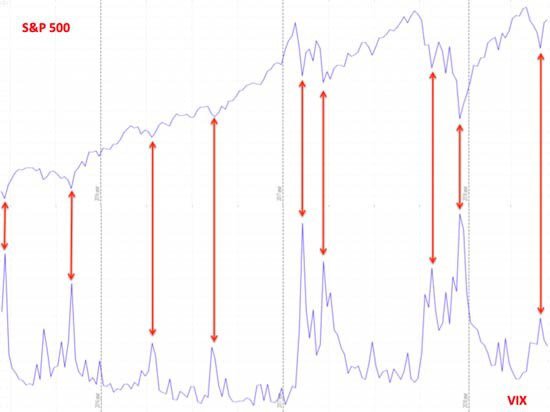Funny thing about the stock market: Fear and greed are clearly the dominant emotional drivers for tens of millions of investors. But if you allow fear and greed to drive your trading decisions...
Well, it's the kiss of death. And you can see it in the disastrous way panicked investing and trading decisions pan out for folks.
The Oracle of Omaha, Warren Buffett - the third-richest man in the world - put his own spin on it when he said, "Be fearful when others are greedy, and greedy when others are fearful."
Buffett is onto something there - go figure.
Today, I'm going to show you how to leverage the fear and greed of others for the most possible profits.
You'd better believe Buffett does this for himself...
[mmpazkzone name="in-story" network="9794" site="307044" id="137008" type="4"]
People Are Greedy When Making Money and Fearful When Losing It - Use That
The practical result of investors basting themselves in fear and greed is they may tend to stay in trades too long or get out too soon, which can often lead to big losses and lost profits.
This is why we never trade on feelings. Because while others are blinded by emotion, we can use market sentiment to swoop in and snag profits.
TODAY I'm giving a limited number of Money Morning readers special access to my Cash Course for just a buck. Learn how to claim your spot here.
The most popular sentiment indicator is the CBOE Market Volatility Index, or the VIX. Created by the Chicago Board Options Exchange (CBOE), the VIX is a measure of expected price fluctuations in the S&P 500 options over the next 30 days.
It is calculated by the CBOE in real time using a complicated formula to derive expected volatility by averaging the weighted prices of out-of-the-money puts and calls multiplied by the volatility of the option.
The good news is you can put the complex formula away.
Just know that the VIX is a very useful sentiment indicator that can direct us to big profits - when you're using it the right way.
I say "the right way" because the VIX is misunderstood. Many investors use it to predict the sentiment on individual options. But that will just result in losing money, because the VIX is for the overall market.
It is often referred to as the "fear indicator," and it's at its highest when markets bounce after a drop. It does a great job of calling market pivot points, too...
Take a look at the chart below that's showing the S&P 500 and the VIX:

Notice that the VIX (bottom chart) spikes up when the S&P 500 (top chart) spikes down. You can see it at each of the red arrows. This means that the VIX is negatively correlated to the S&P 500. When markets go up, the VIX goes down, and vice versa.
Bearish and correcting markets typically culminate in a capitulation event, in which fear is at its maximum, and the VIX shows that.
The opposite is also true. The VIX will drop to low levels when the market tops. In other words, fear drops and is replaced by greed.
This relationship is captured in the common trading adage:
"When the VIX is high, it's time to buy. When the VIX is low, it's time to go."
In other words, go bullish on the market when the VIX spikes up and bearish when the VIX drops to the low end of its range.
If you'd done that in the chart above, you'd have cleaned up.
The trick is to call the highs and lows in the VIX. Over the past three years, the VIX has ranged between 9.14 and 30.11. Now, there are no absolute numbers that define "high" and "low" in the VIX, but after taking that range into consideration, I typically use this very simple reasoning:

Of course, the VIX peaks are only visible in hindsight. So to time your entry points right, you need to apply basic technical analysis, like support, resistance, and volume. I talk about all that stuff in my "Cash Course" sessions - you can learn how to get access here.
Then, when you play the VIX right, it can drop some major cash into your wallet.
Get Access to My Cash Course for Just $1
My seven-day Cash Course covers all the essential trading ideas you need to know to get the most profit potential out of the markets in 2019.
I'll review the basics, of course, and I'll share dozens of my most lucrative secrets to potentially start collecting anywhere from $1,190, $1,313, and even $2,830 in consistent income - each and every week.
All of this and more can be yours for only $1.
Follow Money Morning on Facebook and Twitter.
About the Author
Tom Gentile, options trading specialist for Money Map Press, is widely known as America's No. 1 Pattern Trader thanks to his nearly 30 years of experience spotting lucrative patterns in options trading. Tom has taught over 300,000 traders his option trading secrets in a variety of settings, including seminars and workshops. He's also a bestselling author of eight books and training courses.



